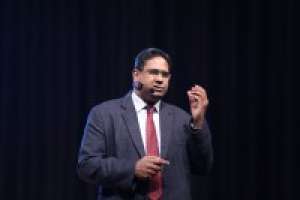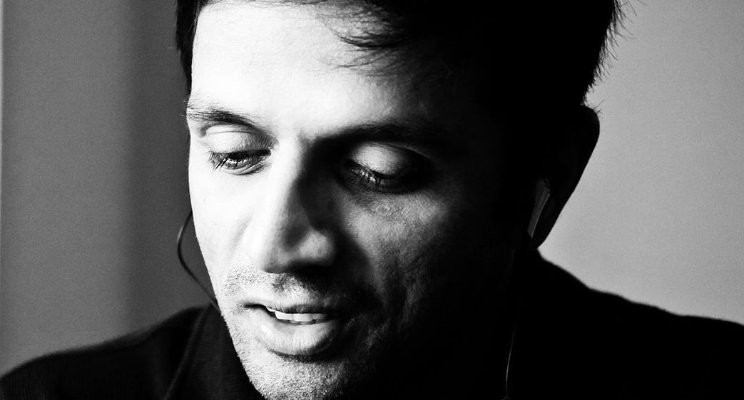
Hariharan 's BLOGS
The Rahul Dravid Model Of Management
Published: Apr 10th, 2019 04:10 amA great contemporary of Sachin Tendulkar, The God Of Cricket, was The Wall Of Indian Cricket, Rahul Dravid. Sachin was the once-in-a-century batsman, whose achievements intimidated you and all you could do was feel a sense of awe. Sachin was elevated to the status of God because the common man felt his feats were out of bounds for him.
Rahul Dravid, in contrast, was the middle class guy next door who, through sheer tenacity rather than swashbuckling talent, scaled peaks in batsmanship which the common man found believable and achievable. Yet the qualities that made Dravid what he became are not ordinary by any stretch of imagination.
Dravid constructed his innings as well as his career brick by brick. It was a prodigious debut at Lord's where he scored a near century, but it did not come when he was a prodigy. He made his test debut in the normal early 20s', against Sachin who took on the mighty Wasim and Waqar in Pakistan at just 16.
Dravid came across as the slow-moving executive in a country where careers were supposed to move like Fast Moving Consumer Goods. The latter half of 90s' and the turn of the century saw India take giant strides in the economic sphere. No one epitomised the spirit of liberalisation through the 90s' as Sachin did. He was already a batting icon when Dravid made his test debut. Sachin was the Amitabh Bachchan of Indian cricket, relegating other good players to side roles on the cricket field. Yet, just as Amitabh shone brighter due to the competent actors around him, Sachin's prowess expanded as batsmen like Dravid resolutely held one end up.
Dravid started and ended his career under the shadows of Sachin, just as Shashi Kapoor played second fiddle to Amitabh. However, both Kapoor and Dravid never tried to outshine the respective supremos. They simply executed their roles to the best of their abilities without ever bothering about being the labeled as the numero uno of their respective crafts.
Dravid's success provides a workable blueprint for the common people of India - struggle, work hard, be boring but effective, know your limitations, keep improving, keep doing your best, and simply hope for the best. Typical middle class values that endeared Dravid to the masses who found a metaphor for his struggles within the 22 yards for their own trials and tribulations in the canvass of life. Yet, just as the common man would break free once in a while by giving errant politicians a run for their money, Dravid too could assert himself and invoke the aggressive spirit by hitting the fiery Allan Donald for a six. Towards the end of his career, the quintessential test batsman even adapted to T20 cricket. This was akin to Sunil Gavaskar adapting to the one day format towards the end of his career.
Dravid's career acts like a manuscript for corporate professionals looking to build their career to a crescendo. His batsmanship centered around patience - an almost incomprehensible quality for many who are part of the `instant gratification generation`. Dravid showed the world that well left was well played - another lesson for Corporate India which wants to reach out to every opportunity to prove a point just as a batsman with a fetish to fish for deliveries outside the off stump. Great careers are built as much by letting go certain tempting opportunities as by staying the course by battling corporate bouncers and swings with patience and skill.
My Super Boss used to say careers are built inch by inch, not kilometre by kilometre. While once in a while batsmen like Sehwag break all rules and hit the highway from Ball 1, exceptions do not form the rule. Both cricketing and corporate history reveal that greatness was built over long years of perseverance, constant improvement, reinvention, adaptability and resourcefulness over resources.
Dravid's career symbolised the classic quote by Thomas Edison: "Genius is one percent inspiration and ninety-nine percent perspiration." At a time when people are looking to drive their careers at breakneck speed with the lurking threat of a breakdown, a classical approach to career building may well be the answer to mental peace at bedtime.
Dravid felt secure within as he gave his best every time. That's what we all need to learn to do - give our best every time, and take the results as they come. It's not about whether you get what others are getting; it is about whether you are doing your best and growing yourself. In the Dravid model of management, there is no space for short cuts. Every great innings was constructed on the foundation of pain and discipline both on and off the pitch. Dravid demonstrated the power of preparation for consistent performance. Do you as a professional prepare everyday for the challenges that may stare on your face anytime?
Another key aspect of the Dravid model of excellence is the ability to conquer adversity. He partnered with VVS Laxman in Kolkata in 2001 against Australia to stitch an unbelievable come-from-behind win. That one partnership altered the careers of Laxman and Dravid and the future of Indian cricket. It infused a kind of self belief not seen before in Indian cricket. Careers too sometimes need just one great partnership to get redefined forever. But the key lies in surrendering to the team cause just as Dravid did all through his career. He not only did his core, which was batting, but also kept wickets in one day cricket to help his captain have better selection options. Do you as a corporate professional take on additional responsibilities to help your team get into better winning shape? After all, you win only if the team wins.
Dravid played a pivotal role in India's overseas wins and in shedding the tag of 'Tigers at home, Lambs abroad'. As a corporate professional, ask yourself what is the life-altering contribution you are making for your organisation that will catapult you to the status of a legend?
Rahul Dravid, even as a professional cricketer, was also a reader. This made him a thinker and not just a player. His speech at the 2011 Sir Donald Bradman Oration is a classic, which reveals the intellectual side of the cricketing legend (https://www.sportskeeda.com/cricket/transcript-of-rahul-dravids-speech-at-the-sir-donald-bradman-oration). Do you read enough and engage in quality conversations that lift your perspectives beyond your professional space? Whatever our profession, we live in a world with infinite variables and dynamics. To limit our worldview is to limit our potential.
Rahul Dravid's model of management is practical as well as uplifting. It offers lessons that can make us the kind of professionals our peers will feel proud to talk about. Dravid, even post retirement from the game, commands the immense respect of his peers, keen observers of the sport, fans and the next generation of cricketers. He is a timeless legend and the Dravid Model Of Management offers a timeless blueprint for success.
Let's invoke the Rahul Dravid in us.

Comments
Add Comment